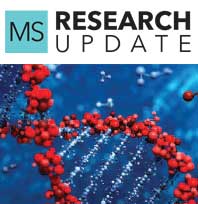Vitamin D

In this Update
FDA-Approved Medications: Recently Approved
New Directions in MS Research
Previous: Gut Microbiome | Next: Biomarkers
Lower-than-normal blood levels of 25-hydroxyvitamin D (25(OH)D) are associated with elevated risk for MS and greater disease activity. However, research has yielded conflicting results on how vitamin D3 supplementation affects disease activity in MS. Additionally, no consensus has been reached on the optimal supplemental dose to give or the blood level of Vitamin D3 to target.
Against that backdrop of uncertainty, researchers in Slovenia investigated the safety and efficacy of administering relatively high doses of vitamin D3 to people with relapsing forms of MS. In particular, they focused on the impact of vitamin D3 supplementation in the winter months, when sunlight exposure is reduced. This timing is significant because the body’s production of vitamin D depends in part on the skin’s absorption of sunlight.
The researchers randomized 78 people with relapsing-remitting MS to receive either 1,000 international units (IU) per day or 4,000 IU/day of Vitamin D3 supplementation. A dose of 1,000 IU/day is considered a standard dose, and 4,000 IU/day is designated as the higher dose. Neither the study participants nor their clinicians knew who was receiving which dose.
At the outset of the study, patients in the two groups had similar average blood levels of 25(OH)D: 59.53 nmol/l in the standard group and 55.19 nmol/l in the higher-dose group. The two groups were also similar in other ways. After four months of daily Vitamin D3 supplementation, average blood levels of 25(OH)D were 74.97 nmol/l in the standard-dose group and 104.92 nmol/l in the higher-dose group.
At the end of the four-month treatment period, people in both groups had better average walking time as measured by the Timed 25-Foot Walk. No side effects of therapy were reported in either group. Similarly, measures of kidney function and calcium levels were normal, and not significantly changed, in both groups. However, when asked to use a visual scale to assess their health, people in the higher-dose group gave themselves higher scores than did the people in the standard-dose group.
Those findings prompted the researchers to conclude that higher-dose vitamin D3 supplementation is safe and effective, and should be employed, particularly in winter time.84
Meanwhile, a study by Dutch researchers found that longer treatment with an even higher dose of vitamin D3 did not have a meaningful impact on one key biomarker of MS disease activity.
The investigators examined whether 14,000 IU/day of vitamin D3 taken for 48 weeks would lower blood levels of neurofilament light chain (NfL) in people with MS who already were taking an interferon-based disease-modifying therapy (DMT). Elevated levels of NfL in the blood are associated with MS disease activity.
The study involved 40 people with relapsing-remitting MS. All received interferon therapy, while 24 also received Vitamin D3 and the remaining 16 instead received a placebo. After 48 weeks, blood levels of 25-hydroxyvitamin D were roughly four times higher in the treatment group than in the placebo group, as would be expected, but serum NfL levels were almost exactly the same – at a median level of 25.4 pg/mL in the treatment group and 25.3 pg/mL in the placebo group. While this does not mean that Vitamin D3 supplementation may not have a role to play in the overall management of MS, the study findings failed to show a connection between increased Vitamin D levels and a key biomarker of disease activity.85
